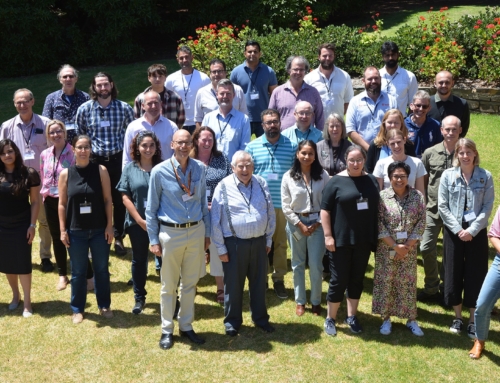Lucia Montini, an Italian PhD student from the University of Copenhagen, travelled to Adelaide to work with the team of The Plant Accelerator to study the effects of environmental stress in cereals, using Sorghum bicolor as a key model plant. Here is Lucia’s blog:
‘Sorghum is the fifth most important crop in the world and can be used as a model plant to study environmental stress due its natural resistance to drought and high temperature. Dhurrin, a specialized compound present in Sorghum, is typically used by the plant as a defense compound releasing hydrogen cyanide. Under different environmental stresses, such as drought, however, dhurrin may be metabolized to provide essentials elements like nitrogen.
As our project required a combination of sun and warm weather, high-quality phenomics technology and the support of expert staff, our sorghum plants were moved from currently cold and grey Denmark to sunny South Australia.
Using the high-throughput phenotyping platform of The Plant Accelerator, the Sorghum plants have been drought treated to test the hypothesis that dhurrin can provide a source of nitrogen. The plants are then re-watered to see how the compounds are re-localized in different tissues (leaves, sheath and roots) in stressed plant. The high-throughput imaging facility is used to image plants daily in order to monitor their performance under drought stress and their growth and architecture over time. Furthermore, based on the images, specific time points are selected to harvest fresh material and to apply metabolomics analysis.
I am very thankful to the Australian Plant Phenomics Facility for providing the travel grant to make this research possible! This has been an excellent opportunity to conduct my experiment with this exceptional team that made me and my plants happy and extremely welcome!’







